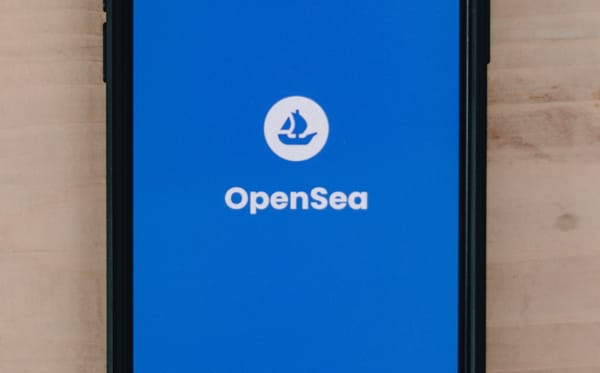Decentralized Finance (DeFi): Opportunities and Risks

Introduction to Decentralized Finance (DeFi)
Decentralized Finance, commonly known as DeFi, represents a paradigm shift in the financial industry. By leveraging blockchain technology and cryptocurrencies, DeFi aims to democratize access to financial services, eliminating the need for traditional intermediaries like banks and brokers. This article delves into the benefits and risks associated with DeFi and highlights some popular projects and their use cases.

Benefits of DeFi
1. Accessibility
One of the most significant advantages of DeFi is its accessibility. Anyone with an internet connection can access DeFi platforms, regardless of their geographic location or financial status. This inclusivity is particularly beneficial for the 1.7 billion adults globally who do not have access to traditional banking services[4].
2. Lower Costs and Higher Efficiency
DeFi eliminates the need for intermediaries, reducing transaction costs and increasing efficiency. Traditional financial systems often involve multiple intermediaries, each taking a cut of the transaction. DeFi platforms, on the other hand, use smart contracts to automate and streamline processes, resulting in lower fees and faster transactions[5].
3. Transparency and Security
DeFi platforms operate on blockchain technology, which provides transparency and security. All transactions are recorded on a public ledger, making them immutable and auditable. This transparency reduces the risk of fraud and corruption, as anyone can verify the transactions[4].
4. Autonomy and Control
Users have full control over their assets and personal information in DeFi. Unlike traditional financial systems where banks hold and control user data, DeFi platforms allow users to manage their funds directly through decentralized applications (dApps)[1].

Risks Associated with DeFi
1. Technical Complexity
Engaging in DeFi requires a high level of technical expertise. The complex nature of blockchain technology, smart contracts, and cryptocurrencies can be daunting for beginners. Without a comprehensive understanding, users are susceptible to making errors, which could lead to substantial financial losses[4].
2. Security Vulnerabilities
While blockchain technology is secure, DeFi platforms are not immune to hacks and exploits. Poorly written smart contracts can be exploited by malicious actors, leading to significant losses. The absence of regulatory oversight means that users have limited recourse in the event of a hack or scam[4][5].
3. Regulatory Uncertainty
DeFi operates in a regulatory gray area. The lack of clear regulatory frameworks in many jurisdictions can lead to legal uncertainties and potential disputes. Future regulatory crackdowns could impact the viability of certain DeFi projects[5].
4. Volatility and Collateralization
Cryptocurrencies are highly volatile, and this volatility extends to DeFi platforms. Most DeFi lending transactions require over-collateralization, which restricts access to those who can provide sufficient collateral. This requirement limits the inclusivity of DeFi lending services[5].

Popular DeFi Projects and Their Use Cases
1. Uniswap
Uniswap is a decentralized exchange (DEX) that allows users to swap various cryptocurrencies without the need for a centralized intermediary. It uses an automated market maker (AMM) model, where liquidity providers supply pools of funds that facilitate trading. Uniswap has become a cornerstone of the DeFi ecosystem, enabling seamless and permissionless trading[1].
2. Aave
Aave is a decentralized lending platform that allows users to lend and borrow cryptocurrencies. It offers unique features such as flash loans, which do not require collateral and must be repaid within the same transaction. Aave's protocol is non-custodial, meaning users retain control over their funds at all times[1].
3. Compound
Compound is another leading DeFi lending platform that enables users to earn interest on their crypto assets or borrow against them. Interest rates on Compound are determined algorithmically based on supply and demand. The platform's governance is decentralized, with token holders having a say in protocol changes[1].
4. Chainlink
Chainlink provides decentralized oracles that allow smart contracts to interact with real-world data. Oracles are crucial for DeFi applications that require external data, such as price feeds for decentralized exchanges or weather data for insurance contracts. Chainlink's robust and secure oracle network has made it a key infrastructure provider in the DeFi space[1].

Conclusion
Decentralized Finance (DeFi) offers numerous opportunities, from increased accessibility and lower costs to enhanced transparency and user control. However, it also comes with significant risks, including technical complexity, security vulnerabilities, and regulatory uncertainty. As the DeFi ecosystem continues to evolve, it is crucial for users to stay informed and exercise caution when engaging with these platforms. Popular projects like Uniswap, Aave, Compound, and Chainlink showcase the diverse applications and potential of DeFi, paving the way for a more inclusive and decentralized financial future.
Citations:
[1] https://www.investopedia.com/decentralized-finance-defi-5113835
[2] https://www.fidelity.com/learning-center/trading-investing/crypto/decentralized-finance-defined
[3] https://www.techopedia.com/decentralized-finance-trends
[4] https://www.theblock.co/learn/245712/what-are-the-advantages-and-disadvantages-of-defi
[5] https://www.forbes.com/advisor/investing/cryptocurrency/defi-decentralized-finance/







